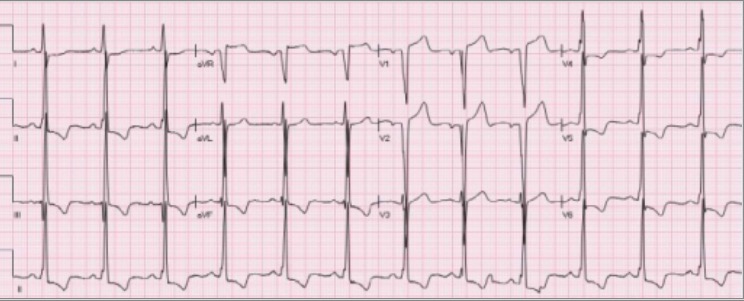Playlist
Show Playlist
Hide Playlist
Hypertension: Epidemiology
-
Slides 06 VascularMedicine advanced.pdf
-
Reference List Vascular Medicine.pdf
-
Download Lecture Overview
00:01 Let’s talk very briefly a little bit about the epidemiology. In other words, how common is this disease. 00:06 I’ve already told you a third of Americans are affected by hypertension. How good are we in the United States at finding these patients? Well, you can see the percentages here on the y axis. And you can see a comparison of two-year periods: 1999-2002 and 2005-2008. 2005-2008 is in the light green. 00:32 And you can see we’ve been doing better but only a little bit better. You can see still in only about a third of the patients are we actually making the diagnosis. When we make the diagnosis, we’re pretty good on treatment. We’re up to 70%. But even when we’re treating, we’re still only getting adequate control in about half of the patients – about 50%. So we have a long way to go in the public-health arena to finding these patients and treating them. 01:00 And here you see the prevalence diagram again and the point made that, in 2005-2008, 31% of US adults were found to be hypertensive. So this is a very common public-health problem. 01:15 And I hope I’ve made it perfectly clear: all of the terrible complications that can occur if hypertension is not treated. 01:25 Interestingly enough, compared to the 1999-2002 there was no significant decline in the hypertension prevalence – that is how much hypertension was present in the society – although more patients were being treated as you saw. As many as 70% were being treated but only about half were being well controlled. So we still have a big job in front of us in terms of treating hypertension. 01:53 Certain groups are particularly poorly controlled with respect to their hypertension. First of all young adults, because often they don’t think they have hypertension. They ignore it. Number one. Mexican Americans, where there’s a high incidence of obesity, also have a very high risk of not being adequately treated. Patients in the United States who don’t have health insurance also have an increased risk of not being treated adequately. This has been partly helped by the new Obama Health Care law but there’s still a significant number of people in the US who don’t have health insurance and who get very poor health care. Patients who don’t have a source for medical care, living out in very remote areas where it’s not easy for them to get to a doctor, often have poorly-controlled hypertension. 02:45 And there are some individuals who just don’t like going to the doctor’s and so forth. 02:51 Those who have not received medical care in the last year also stand a chance of having poorly-controlled hypertension because they’re not being monitored adequately by their physician. 03:01 Approximately 86% of people in the United States with uncontrolled hypertension report having some form of health insurance but, unfortunately, even patients with health insurance doesn’t guarantee that they’re going to be achieving blood-pressure control. And this is again one of the big problems in health care I know, not only in the United States but also in Europe. Getting patients to adhere to their medical programme. Frequently, patients will start out and, for one reason or another, they stop their medicines and their blood pressure consequently is not well controlled. And this is true about a whole variety of medicines, including for example the statin medicines for cholesterol control. Patients very frequently stop their medicines for reasons, “Oh I didn’t think I had to take it for the rest of my life” or “You know, I’m worried about effects from these drugs” and so forth. In fact, it’s been shown in many excellent scientific studies that you really need to continue to take these drugs to get the benefit. And when patients stop them, bad things happen.
About the Lecture
The lecture Hypertension: Epidemiology by Joseph Alpert, MD is from the course Arterial Diseases.
Included Quiz Questions
Which of the following statements regarding the epidemiology of hypertension is correct?
- Less than half of patients with hypertension are considered “controlled.”
- Nearly 10% of the US population has hypertension.
- Once diagnosed, over 90% of patients adhere to treatment.
- The prevalence of hypertension has fallen over the past decade.
- The number of patients with their hypertension being "controlled" has decreased.
The likelihood that a patient’s hypertension is well controlled has been linked with several risk factors. Which of the following patient groups are most likely to have their blood pressure “controlled”?
- Patients with health insurance
- Young patients
- Latino populations, specifically groups with higher obesity
- Patients living in the rural areas
- Patients who visit their doctor less than twice per year
Customer reviews
5,0 of 5 stars
| 5 Stars |
|
5 |
| 4 Stars |
|
0 |
| 3 Stars |
|
0 |
| 2 Stars |
|
0 |
| 1 Star |
|
0 |





